Secrets to Healthy Baking
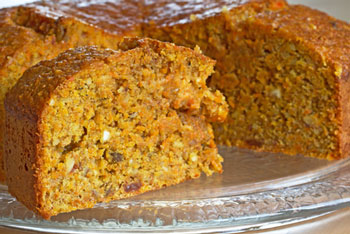
I’m a baker at heart. I love baking cakes, but more than that, I love eating them. Great for the tastebuds, but not so great for the hips.
So what to do? So that I can continue to bake, I searched for and developed these healthy baking treats.
I don’t believe we should deny ourselves
completely. In fact I think our diets are doomed to failure if we do and
if you’re like me, you crave a bit of sugar now and then.
The trick is to find recipes that are low in fat and sugar.
Plus
by baking our own cookies and cakes we determine what ingredients go
into the making of them. That way we ensure that the ingredients are
fresh, healthy and natural without compromising on taste.
So how do you successfully produce healthy baked goods?
Baking is an art form and more so when you are baking low fat recipes. Normal cake and cookie recipes have high levels of fat and sugar. This is what gives them their taste and texture. Reducing these amounts requires precise techniques for success.
Learn How
10 Steps to Successful Low Fat Baking
1. Follow the recipe
Baking
is an exact science. Most cake, cookie, muffin and bread recipes
follow a specific formula of ingredients such as flour, fats, sugar,
eggs and raising agents. If you deviate from the amounts specified, or
substitute ingredients, your results may be far from what you expect.
If you like experimenting, just expect a few disasters along the way.
2. Assemble your ingredients before you begin
Always
read through the recipe before you begin baking to avoid mistakes.
It’s very easy to mis-read instructions when you’re busy. Then assemble
your ingredients. It’s too late once you have started, if you suddenly
discover you need more flour or sugar.
3. Measure your ingredients
Healthy baking
is not like other methods of cooking, where you can throw in a little
bit of this or a dash of that. Exact measuring of your ingredients is
essential for success. This is particularly true of the main
ingredients such as flour, sugar and butter etc. You don’t need to be
quite so accurate with ingredients such as dried fruit, nuts or
chocolate chips.
4. Preheat your oven
Never
place cakes, cookies or other baked goods into a cold oven. They need
that blast of hot air to activate the raising ingredients. Always wait
until the preheat light goes off. If your oven isn’t at the correct
temperature, they will take longer to cook and you will end up with
dried out offerings.
5. The Cool Down
|
Never try to remove hot cakes from their tins, or cookies from their trays. All baked goods need to be allowed to cool, some more than others. Muffins and quick breads should be removed a few minutes after baking to prevent them sweating. Cookies can be left for about 5 – 10 minutes. Cakes, however, can be left to cool in their tins. |
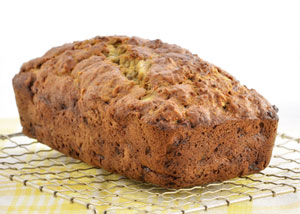 |
6. Check your Oven Temperature
Incorrect
oven temperature is up there with incorrect measuring of ingredients as
the main reason for failure. Get to know your oven and if in doubt,
use an oven thermometer to check its accuracy. Then you can adjust the
temperature accordingly.
Most
ovens also have hot spots. If you find that one side of your cakes is
cooking faster than the other, turn them halfway through baking.
7. Use the Correct Size Pans
Most
recipes have been tested using a particular size pan. If you don’t
have that particular size, and use a different one, you will need to
adjust the cooking time.
Using
larger or small size pans changes the depth of the batter and it is
this that affects cooking time. Larger pans make the depth shallower
so require less cooking time. Smaller pans have the opposite effect,
increasing the depth of the batter, and will take longer to cook.
9. Don’t overmix your batter
When
you reduce the fat in healthy baking, you are usually reducing the
amount of butter used. When butter is creamed with sugar it aerates the
batter and produces a light, fluffy texture in cakes and other baked
goods. With reduced amounts of butter, there is less aeration and so it
is very easy to overmix the batter.
10. Avoid Overbaking
Some
fat is necessary in all baking as it provides moisture and gives the
cake texture. But healthy baking uses significantly reduced amounts of fat and cakes
can dry out much more quickly that those made with full fat.
Check
for doneness a few minutes before the baking time. The cake should
spring back when gently pressed in the center and the edges should be
starting to brown and pull away from the pan.
How to Reduce Sugar in Baking
Off course most baking recipes still use a small amount of sugar. Sugar is an essential ingredient in baking and is difficult to eliminate completely. Most recipes simply won’t work without it. It adds texture and color and increases the shelf life of your cakes and cookies.
But it is possible to reduce the amount of sugar. Most of our recipes will contain a small amount of sugar, but we have attempted to reduce the overall amount.
- Use fruit purees to add moisture and sweetness.
By using foods that contain natural sugars rather than refined sugars, you are also getting other valuable nutrients.
How to Reduce Fat in Baking
Fat is what makes most baked goods so unhealthy as they usually contain large amounts of butter, milk, cream cheese or chocolate. But it is possible to reduce the amount of fat in your cakes and cookies, although like sugar, you won’t be able to eliminate it completely.
Some fat is needed to achieve the color, taste and texture you expect from bakery items.
- Use skim milk in place of full fat milk
- Look for recipes that use cocoa powder rather than chocolate
- Buttermilk can be substituted for milk or sour cream
- If making a cream cheese icing, use low fat cream cheese
- Ricotta can be substituted for butter when making icings
- If using yogurt look for low fat yogurt
- Substitute fruit juice for milk
- Fruit purees can also be used
- If making a pie use filo pastry rather than flaky or short pastry
- Use low-fat margarine rather than butter
- Replace whole eggs with egg whites
- If a recipe calls for oil, use canola oil – it has a mild flavor and is a monounsaturated fat
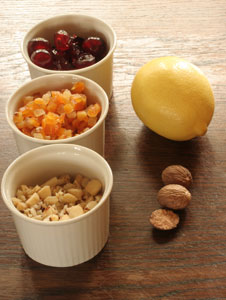
Of course there is more to healthy
baking than simply reducing fat and sugar. Adding other healthy
ingredients increases the fiber content, reduces cholesterol and boosts
nutrition.
- Add bran and wheat germ
- Replace all of part of the white flour with whole wheat
- Add fruit – either fresh, pureed or dried
- Adding nuts will provide fiber
Remember too that frostings and icings contain high amounts of sugar. So if you smother your cakes and cookies with rich buttercream and frostings then it's not really healthy at all is it? Choose cakes that don’t need to be iced. Leave the rich chocolate cakes for special occasions.
Healthy Baking Recipes
Home » Healthy Baking
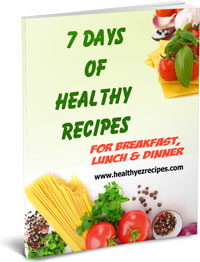
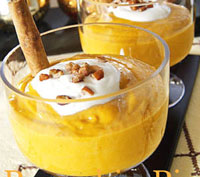
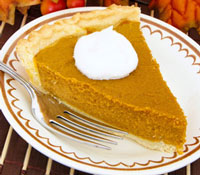
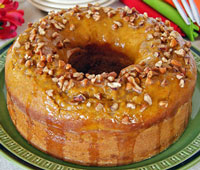
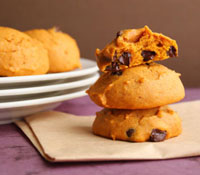
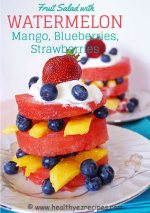
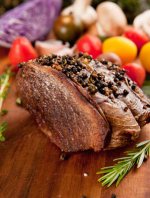
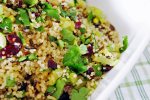
New! Comments
Have your say about what you just read! Leave me a comment in the box below.